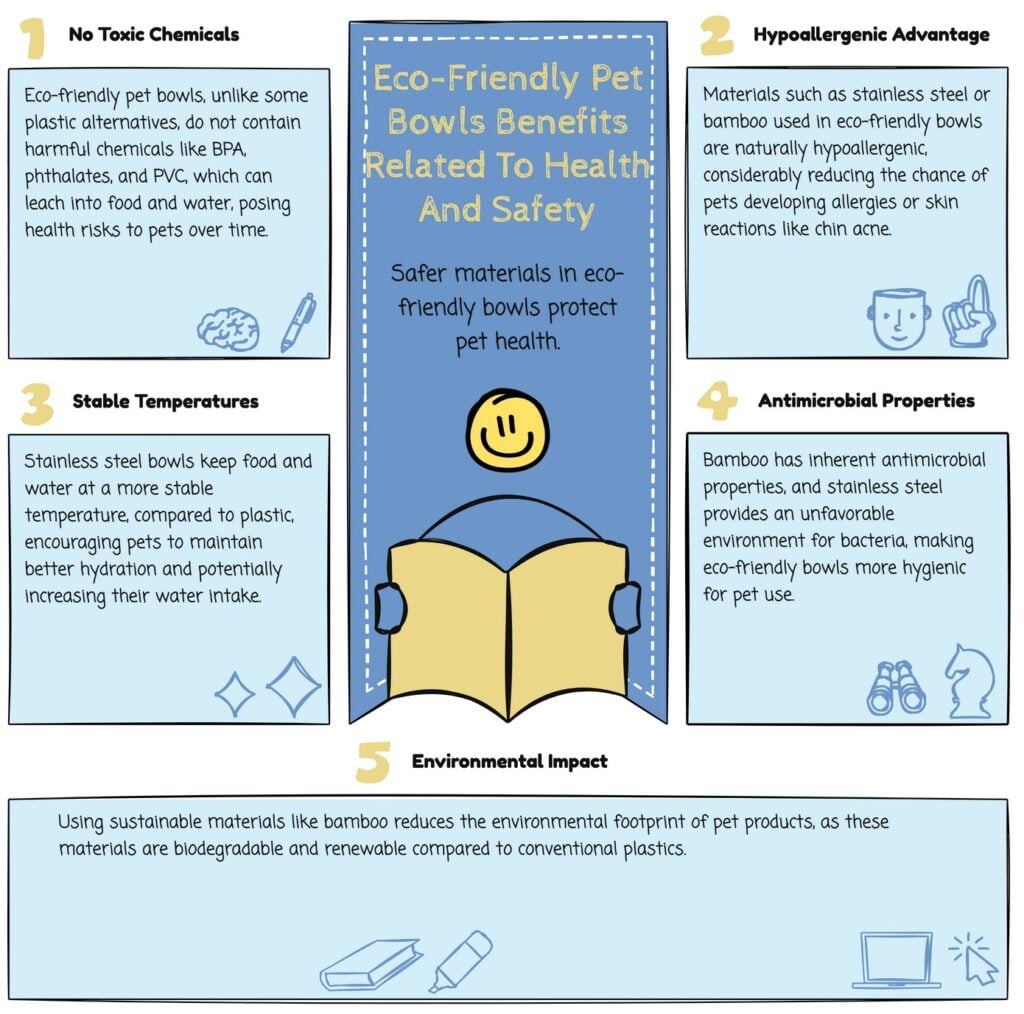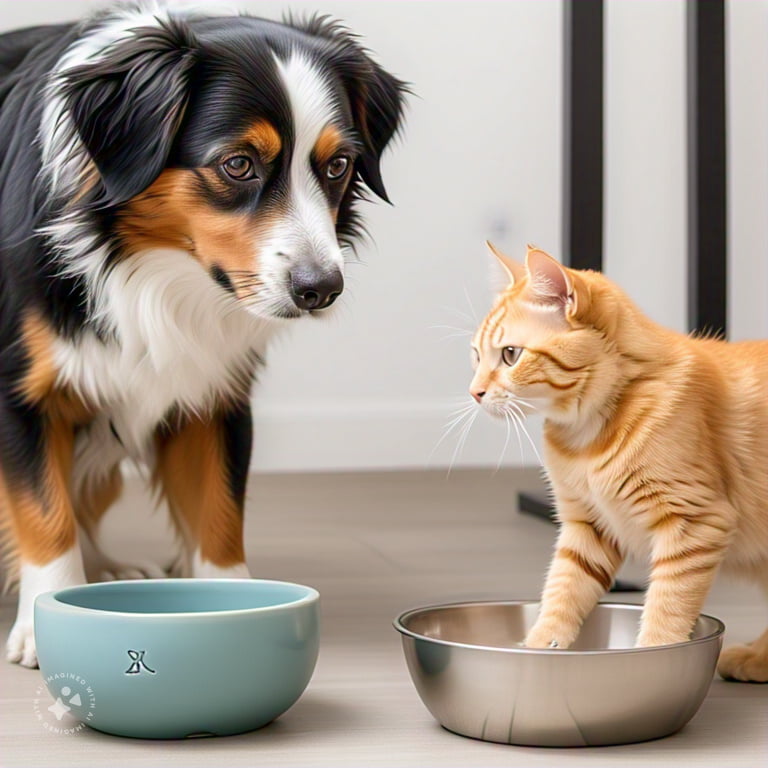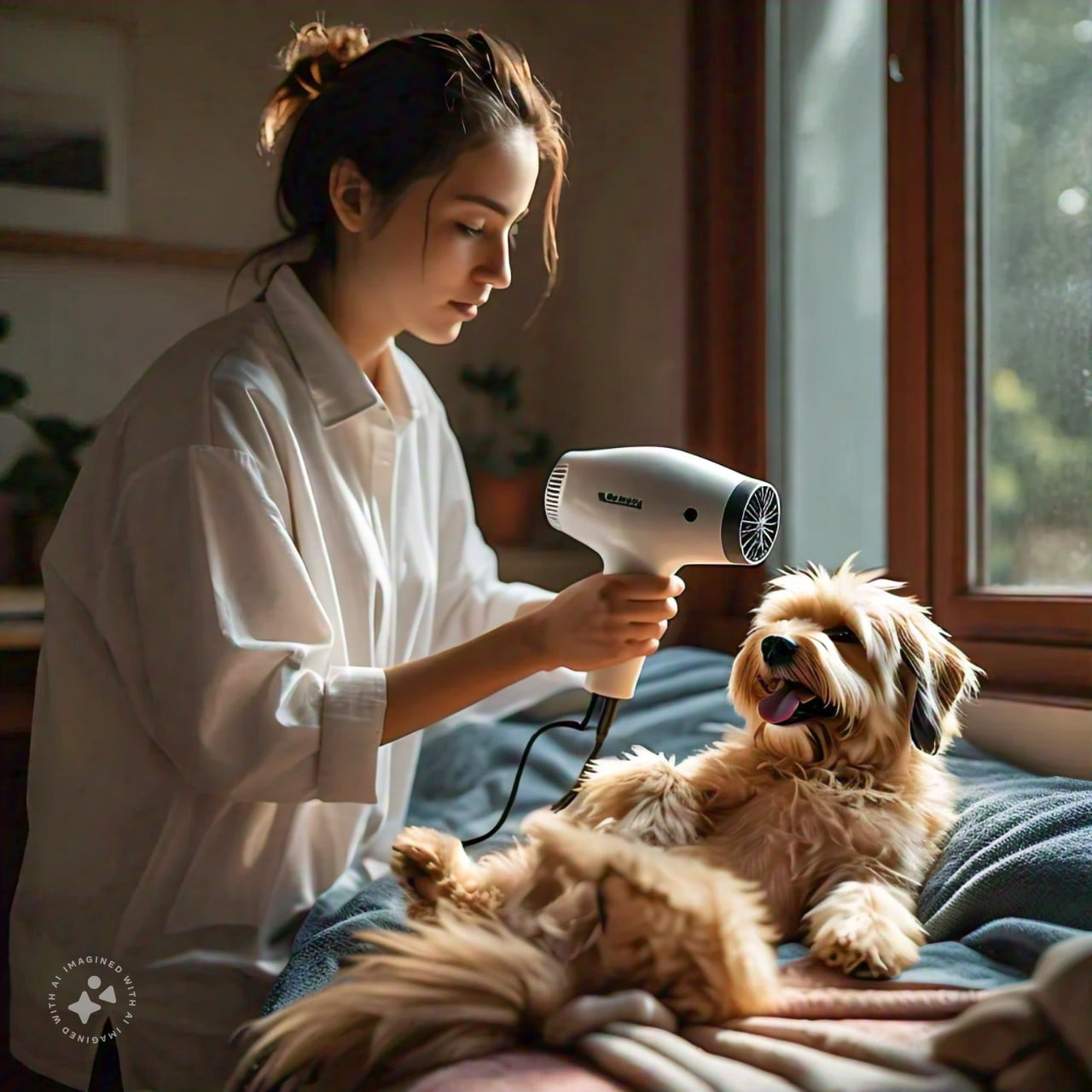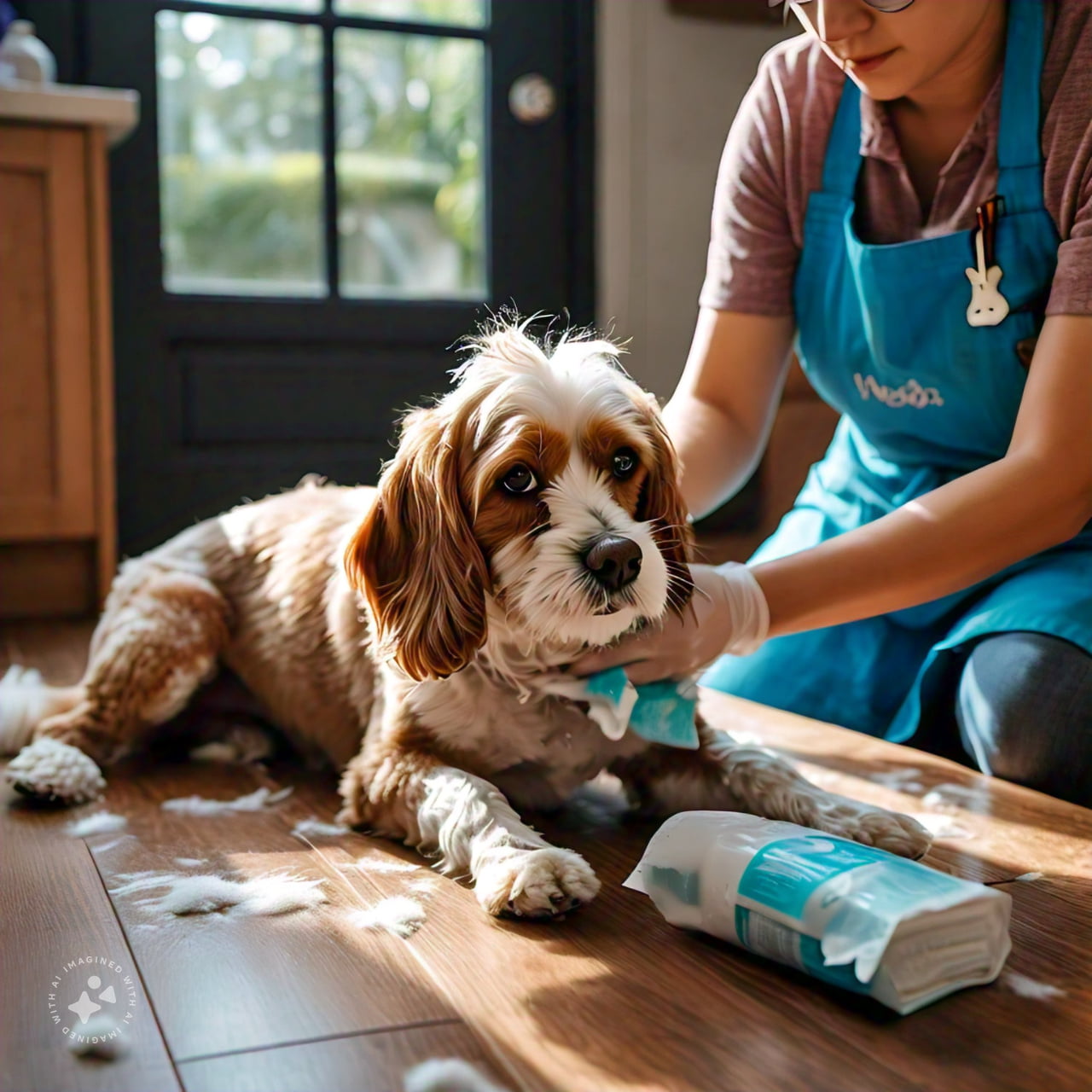10 Pawsome Reasons to Switch to Eco-Friendly Pet Bowls (Your Furry Friend Will Thank You!)
Introduction
Hey there, fellow pet lovers! Have you ever thought about the impact your pet’s bowl has on your pet and the environment? I didn’t either until I stumbled upon eco-friendly pet bowls. These sustainable options are not only great for the planet but also offer numerous benefits for our furry friends.
In this article, we will dive into the top 10 benefits of using Zero-waste pet bowls and explore why making the switch could be one of the best decisions you make for your pet and the environment.
- Introduction
- What Are Eco-Friendly Pet Bowls?
- Top 10 Benefits of Eco-Friendly Pet Bowls
- 1. What materials are used in eco-friendly pet bowls?
- 2. Are eco-friendly pet bowls more durable than traditional ones?
- 3. How do eco-friendly pet bowls promote pet health and safety?
- 4. Why are eco-friendly pet bowls easier to clean and maintain?
- 5. What happens to biodegradable pet bowls at the end of their life?
- 6. Can eco-friendly pet bowls be stylish too?
- 7. Do eco-friendly pet bowls save money in the long run?
- 8. How do eco-friendly bowls reduce bacterial growth?
- 9. Versatility in Types and Sizes
- 10. Supporting Eco-Friendly Businesses
- How to Choose the Right Sustainable Pet Bowls
- Caring for Your Eco-Friendly Pet Bowl
- Conclusion
- FAQs
What Are Eco-Friendly Pet Bowls?
Eco-friendly pet bowls are made from materials that are sustainable, non-toxic, and often biodegradable. Common materials include bamboo, stainless steel, and recycled plastics. These bowls are designed to minimize environmental impact while providing a safe and healthy feeding option for your pets.
Top 10 Benefits of Eco-Friendly Pet Bowls
1. What materials are used in eco-friendly pet bowls?
- Bamboo: This fast-growing grass is a superstar in the world of sustainable materials. It’s renewable, biodegradable, and naturally antimicrobial. Plus, it’s lightweight and durable.
- Stainless Steel: While not biodegradable, stainless steel is the most durable. It’s recyclable, doesn’t leach chemicals, and can last a lifetime with proper care. I’ve had my stainless steel dog bowl for years, and it still looks brand new!
- Recycled Plastics: These bowls are made from plastics like recycled water bottles or food-grade silicone that might otherwise end up in landfills or oceans.
Each material has its own unique benefits. For instance, bamboo bowls are great for outdoor use due to their lightweight nature, while stainless steel is perfect for those power chewers who tend to destroy everything in sight.
Remember, the best choice depends on your pet’s specific needs and your lifestyle. In my experience, having a mix of different eco-friendly bowls for different purposes works wonders. My cat loves her bamboo bowl for dry food, while my dog’s stainless steel bowl is perfect for those messy wet food dinners.
EPA. (2016). Recycling Economic Information (REI) Report.
https://www.epa.gov/smm/recycling-economic-information-rei-report
2. Are eco-friendly pet bowls more durable than traditional ones?
Eco-friendly pet bowls typically have a much longer life than traditional plastic counterparts, offering better durability and longevity for your pet’s feeding needs.
| Material | Durability | Key Features | Longevity | Hygiene |
| Stainless Steel | Extremely High | Resist cracks, chips, and dents | 5+ years with minimal wear | Easy to clean, doesn’t harbor bacteria |
| Bamboo | High | Resistant to water damage, doesn’t warp or crack easily | Several years of quality maintenance | Smooth surface, easy to keep hygienic |
| Recycled Plastics | Moderate to High | More scratch and stain-resistant than traditional plastic | Longer-lasting than traditional plastic | Better resistance to bacterial growth |
| Traditional Plastic | Low to Moderate | Prone to scratches, stains, and cracks | Months to a year before showing significant wear | Scratches can harbor bacteria, harder to keep clean |
3. How do eco-friendly pet bowls promote pet health and safety?
Eco-friendly pet bowls enhance pet health and safety by removing harmful chemicals often found in traditional plastic bowls, reducing the risk of allergies and long-term health issues.

4. Why are eco-friendly pet bowls easier to clean and maintain?
Eco-friendly pet bowls offer superior hygiene benefits due to their smooth, non-porous surfaces and durable materials, making them easier to clean and maintain than traditional options.
When it comes to keeping your pet’s dining area spick and span, eco-friendly bowls are the clear winners. Here’s why:
| Feature | Eco-Friendly Pet Bowls | Traditional Pet Bowls |
| Smooth Surfaces | Stainless steel and glazed bamboo bowls have incredibly smooth surfaces, reducing hiding spots for bacteria. | Plastic bowls often have rougher surfaces that can trap bacteria. |
| Non-Porous Materials | Materials like stainless steel and bamboo are non-porous, preventing absorption of odors and stains. | Plastic can absorb odors and stains over time, making them harder to clean. |
| Dishwasher Safe | Many eco-friendly bowls, especially stainless steel ones, are dishwasher safe, ensuring thorough sanitization. | Not all plastic bowls are dishwasher safe, and some may warp or degrade in the dishwasher. |
| Scratch Resistance | Eco-friendly materials resist scratches better than plastic, reducing bacterial harborage. | Plastic bowls are prone to scratches, which can harbor bacteria and make cleaning difficult. |
| No Residue Build-up | These bowls don’t react with food or water, preventing residue build-up. | Plastic bowls can react with certain foods, leading to residue build-up. |
In my household, the switch to eco-friendly bowls has made my wife the most happy. No more lingering odors or stains, and cleaning time has been cut in half. Plus, we have peace of mind knowing that our pets are eating from truly clean bowls every time.
5. What happens to biodegradable pet bowls at the end of their life?
Biodegradable pet bowls, such as those made from bamboo or other plant-based materials, break down naturally at the end of their life cycle, significantly reducing environmental impact compared to non-biodegradable options.
The end-of-life journey of a biodegradable pet bowl is where its eco-friendly nature really shines. Let’s break it down:
- Natural Decomposition: When a biodegradable bowl reaches the end of its useful life, it can be composted. In the right conditions, it will break down into natural elements, leaving no harmful residues behind.
- Reduced Landfill Waste: Unlike plastic bowls that can take hundreds of years to decompose in landfills, biodegradable bowls break down much faster. This means less long-term waste clogging up our planet.
- Nutrient Cycling: As these bowls decompose, they return nutrients to the soil. It’s like giving back to nature!
- No Microplastic Production: When plastic bowls break down, they create microplastics that can harm wildlife and ecosystems. Biodegradable bowls don’t pose this risk.
- Energy Conservation: The process of breaking down biodegradable materials requires less energy compared to recycling plastic or metal.
Remember, while biodegradable bowls are fantastic, they’re not the only eco-friendly option. Durable materials like stainless steel, which can be recycled at the end of their (very long) life, are also great choices for reducing environmental impact.
6. Can eco-friendly pet bowls be stylish too?
Eco-friendly pet bowls come in a variety of stylish and aesthetic designs that can easily blend with your home decor. Whether you prefer a minimalist look or something more vibrant, there’s an eco-friendly bowl that fits your style. These bowls not only serve a practical purpose but also add a touch of elegance to your pet’s feeding area.

Here’s what your options are:
- Sleek and Modern Designs
- Color Varieties
- Unique Patterns
- Matching Sets
- Multifunctional Designs
7. Do eco-friendly pet bowls save money in the long run?
While eco-friendly pet bowls may have a higher upfront cost, their durability and longevity often result in long-term cost savings compared to frequently replacing cheaper, less durable options.
Please select the type of bowl below to see the cost savings in the long run:
Eco-Friendly Pet Bowl Cost Calculator
In addition, some of the other ways they save money are:
- Health Cost Savings: By reducing the risk of bacterial growth and eliminating harmful chemicals, eco-friendly bowls may help prevent health issues, potentially saving on vet bills in the long run.
- Energy and Resource Savings: The production of eco-friendly materials often requires less energy and fewer resources, which can translate to lower costs over time as energy prices rise.
- Multipurpose Use: Many eco-friendly bowls can be used for other purposes, reducing the need to buy specialized bowls for different needs.
- Reduced Waste Management Costs: With biodegradable options, you’re contributing less to landfill waste, which can lead to lower waste management costs in your community over time.
8. How do eco-friendly bowls reduce bacterial growth?
Eco-friendly pet bowls, particularly those made of stainless steel and bamboo, naturally inhibit bacterial growth because of non-porous surfaces, scratch resistance and their natural antimicrobial properties, providing a more hygienic feeding environment compared to traditional plastic bowls.
A study published in the Journal of Veterinary Medical Science found that stainless steel bowls had significantly lower bacterial counts compared to plastic bowls after normal use and cleaning. The difference was particularly notable for bacteria like E. coli and Salmonella, which can cause serious health issues in pets.
Remember, while eco-friendly bowls can help reduce bacterial growth, regular cleaning is still essential. Even the most bacteria-resistant bowl needs a good wash now and then!
9. Versatility in Types and Sizes
A survey by the Pet Sustainability Coalition found that 68% of pet owners are interested in sustainable pet products, driving an increase in the variety of eco-friendly options available [9].
In my household, I use different eco-friendly bowls for different purposes. My cat has a shallow, wide bamboo bowl for her dry food to prevent whisker fatigue. For my dog, I have a stainless steel slow-feeder bowl to prevent him from eating too quickly, and a collapsible silicone bowl for our hiking trips.
Remember, the right bowl depends on your pet’s individual needs. Consider factors like your pet’s size, eating habits, and any health issues when choosing a bowl. And don’t be afraid to have multiple bowls for different purposes – variety is the spice of life, even for our pets!
10. Supporting Eco-Friendly Businesses
By choosing eco-friendly pet bowls, you can support businesses that prioritize sustainability and environmental responsibility. This may help promote the growth of eco-friendly industries and encourage more companies to adopt sustainable practices. More specifically they can:
- Encourage Innovation
- Create More Demand For Sustainable Products
- Support Ethical Practices
- Promote Circular Economy
- Strengthen Small Business Economies
How to Choose the Right Sustainable Pet Bowls
When selecting an eco-friendly pet bowl, consider the material, size, and maintenance requirements. Bamboo and stainless steel are excellent choices for their durability and safety. Make sure the bowl is appropriately sized for your pet and easy to clean. Look for features like non-slip bases and dishwasher-safe options for added convenience.
Top 5 Eco-Friendly Pet Bowls and How They Compare
| Product Name | Features | Pros | Cons | Amazon Rating |
|---|---|---|---|---|
| Platinum Pets Non-Tip Stainless Steel Bowl | Non-Tip Design, Durable Metal | Long-lasting, Easy to clean | Heavier than plastic options | 4.8/5 |
| Ptlom Ceramic Pet Bowls | No Spill, Anti-Slip Wooden Stand | Stylish design, Raised for comfort | Higher price point | 4.7/5 |
| The Green Pet Shop Bamboo Dog Bowl | Made from Bamboo, Eco-Friendly | Lightweight, Non-toxic | Limited size options | 4.6/5 |
| Ceramic Dog Bowls | Spill-Proof, Durable | Stylish design, Non-slip base | Breakable | 4.5/5 |
| Havniva Ceramic Dog Bowl | Set of 2, Light Green | Non-toxic, Easy to clean | Limited size options | 4.4/5 |
Caring for Your Eco-Friendly Pet Bowl
Proper care of your eco-friendly pet bowl not only extends its life but also ensures it remains safe and hygienic for your pet. Here are some tips to keep your bowl in top shape:
- Regular Cleaning:
- Wash bowls daily with hot, soapy water.
- For stainless steel and some bamboo bowls, you can use the dishwasher. Always check the manufacturer’s instructions first.
- For bowls that aren’t dishwasher safe, use a soft sponge to avoid scratching the surface.
- Avoid Harsh Chemicals:
- Stick to pet-safe, eco-friendly cleaning products.
- Vinegar and baking soda can be great natural cleaning options.
- Dry Thoroughly:
- After washing, dry the bowl completely to prevent water spots and bacterial growth.
- For bamboo bowls, thorough drying is crucial to prevent warping or mold growth.
- Regular Inspections:
- Check for any signs of wear and tear, like scratches or chips.
- For bamboo bowls, look out for any splintering.
- Proper Storage:
- Store bowls in a clean, dry place when not in use.
- For travel bowls, ensure they’re completely dry before collapsing and storing.
- Sun Exposure:
- While a bit of sunlight can help naturally disinfect bowls, prolonged exposure can degrade some materials.
- Avoid leaving bamboo or recycled plastic bowls in direct sunlight for extended periods.
- Rotation:
- If possible, have multiple bowls and rotate them. This allows for thorough cleaning and drying between uses.
In my experience, setting up a cleaning routine makes maintaining eco-friendly bowls a breeze. I clean our bowls every evening after the pets’ last meal, let them air dry overnight so that they’re ready for breakfast in the morning.
Conclusion
Switching to eco-friendly pet bowls offers numerous benefits for both your pets and the environment. From sustainable materials to reduced bacterial growth, these bowls are a smart choice for any pet owner. By making the switch, you’re not only providing a healthier feeding option for your pets but also contributing to a more sustainable future. So why wait? Make the switch to eco-friendly pet bowls today and enjoy the benefits for years to come.
FAQs
How do I know which material is best for my pet?
Consider your pet’s needs and preferences. Stainless steel is durable and non-toxic, while bamboo is biodegradable and stylish.
Are eco-friendly pet bowls safe for all pets?
Eco-friendly pet bowls are generally safe for all pets. However, it’s important to choose a bowl that’s appropriate for your pet’s size and eating habits. For example, heavy stainless steel bowls are great for large dogs, while lightweight bamboo bowls might be better for cats or small dogs.
How often should I replace my eco-friendly pet bowl?
The lifespan of an eco-friendly pet bowl depends on the material and how well it’s maintained. Stainless steel bowls can last for many years, while bamboo bowls might need replacing every 2-3 years. Always replace the bowl if you notice any significant wear and tear, cracks, or deep scratches that could harbor bacteria.
Can eco-friendly pet bowls help with portion control?
Some eco-friendly pet bowls come with portion markers or in specific sizes that can aid in portion control. However, it’s always best to consult with your veterinarian about the right portion sizes for your pet and measure food accordingly, regardless of the bowl type.
Can I use eco-friendly bowls for both food and water?
Yes, most eco-friendly bowls are suitable for both food and water. However, it’s generally recommended to have separate bowls for food and water to maintain hygiene and ensure your pet always has access to fresh water.
Remember, if you have any specific concerns about eco-friendly pet bowls and your pet’s health, it’s always best to consult with your veterinarian. They can provide personalized advice based on your pet’s individual needs and health status.
At Recommended Products Reviewed our goal is to educate you on the latest and trending products and technology that are sustaining and are recommended by experts and others like you. If you care about the environment and want to be made aware of similar trending products, please read our other articles and subscribe to our blog.
This blog post contains affiliate links. If you purchase through these links, I may earn a commission at no additional cost to you. As an Amazon Associate, I earn from qualifying purchases. This helps support the content and resources I provide. Thank you for your support!


